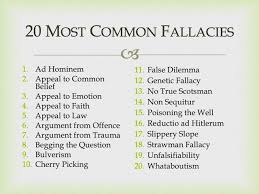Communication Fallacies

Article I choose: https://www.nytimes.com/2025/05/25/us/politics/trump-race-civil-right-white-men.html For Trump, Civil Rights Protections Should Help White Men Administration officials pick and choose which civil rights protections they want to enforce, and for whom. I choose this article as it was the first one that came up on my NYT subscription. In the article, a straw man fallacy appears when critics claim the Trump administration is conveying that “white men are the most discriminated against people in American society.” This misrepresents the administration’s actual stance, which focuses on shifting civil rights enforcement toward claims of anti-white or anti-male bias—an action that, while controversial, is not the same as asserting that white men are the most oppressed. By exaggerating the administration’s position, critics attack a distorted version of the argument, which makes it easier to discredit. This is characteristic of the straw man fallacy, whe...

